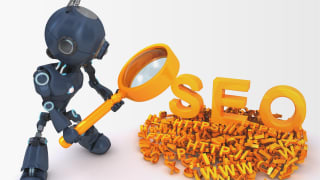The roadmap for sustainable recovery
The roadmap for sustainable recovery
There are certain phrases that are bandied around a lot in the media currently – often to the point of becoming nearly meaningless. ‘Unprecedented times’ is one. The ‘new normal’ is another.
We understand why – in fact, we’re certain we’ve used them ourselves over the last six months. The phrase “the new normal” is a convenient shorthand for our hopes and fears for our future, but it’s also extraordinarily vague. What do we really mean by it? Are we talking about a future where we continue on as normal – albeit in masks and with copious amounts of anti-bac – or can we use this time to aim for an everyday reality that is better in every way? ‘Build back better’ is a nice sentiment, but we need to take the opportunity to define what it is we mean by ‘better’.
This will have to be a joint effort with your citizens, your government, your local businesses, your key stakeholders. To make real change, everyone must be on board with your strategy. What can you do practically as a place marketing or management organisation to help take those first steps?
Defining ‘better’ for your destination
What’s right for your destination won’t necessarily be the best course of action for another. “One mistake that many cities make is that they think they need to be for everyone,” shared Laura Aalto, CEO, at Helsinki Marketing. “But that’s not the point. We need to be the best destination, the best city, for those who share our values and for whom we are the best city. And then to target those people more precisely.”
Taking the time to audit your destination will be essential to understanding how you want to rebuild, and where your strengths and weaknesses are. This isn’t a comprehensive list by any means, but here are some of the questions you need to rigorously interrogate the sustainability of your recovery strategy.
Auditing your visitor economy
The invisible burden of tourism hasn’t disappeared with COVID-19, but the frontiers have moved. Take the pressures of overtourism – while many urban spaces are still quiet, parks and beaches are unprecedentedly (there’s that word again) busy. We need to repurpose pre-COVID responses to match this reality.
Who are your visitors? What has historically bought the greatest value to your place? What hasn’t? And when you talk about ‘value,’ what do you mean? Do you mean the highest spenders, or those who deliver the greatest benefit for your community?
It’s crucial to make sure that the benefits of tourism are experienced equally by your citizens – and that no one is forced to shoulder any unwelcome burdens alone. Thailand recently announced that they would be moving away from mass tourism to target big spenders seeking privacy and social distancing during their recovery. The principal of this is sound – fewer tourists bring fewer risks in a pandemic-era, so focus on those who will bridge the spending gap.
There was almost immediate uproar from the hoteliers however who feared that SMEs wouldn’t benefit from the luxury tourism push. “It’s great to drive business away from mass tourism in the long-term, yet higher rates should ideally be linked to all levels of the business, not just the luxury sector,” explained Anthony Lark, President of the Phuket Hotels Association. “The recovery has to also include hotels that are three- and four-star, not just five-star.”
Quality tourism for a resilient future
It’s not just the quality or type of tourist that matters, but the quality of the tourism. An all-inclusive can still deliver value for a community if they employ local staff, source local produce, and promote authentic local experiences. Likewise, understanding which audiences truly benefit your community will enable you to shape your strategy accordingly. High-end tourists will bring in the dollars, yes, but they’re not going to use your public transport systems, and they’re not going to shop in your corner shops.
The Travel Foundation worked with Tenerife to identify their ‘optimum tourism mix’ by understanding what bought the greatest benefit to the region. They defined value as:
- Tourism that generates positive economic returns spread across different sectors and regions
- Where its activities contribute to the conservation of the destination’s natural, historical, and cultural assets
- Where its activities have minimal negative impact.
Some market segments may seem undesirable if they typically spend less, but they could still be delivering real value for the destination – either because they stay longer, explore less popular areas, or visit off-season. While backpackers may spend less overall than a typical ‘package’ tourist, you may find that your backpackers are contributing more widely to the local economy and creating more opportunities for livelihoods than high-spending tourists. This is why it’s essential to understand what ‘better’ means for you as you rebuild, and interrogating your data is the first step.
Likewise, it’s probably worth re-evaluating your business event strategy. Are you attracting as many events and conventions as you can? Or are you looking at the talent that you produce and the local companies in your community and then pursuing a business event strategy that benefits them as well? If you’re home to a renowned agricultural college and several innovative Agritech companies, targeting your events strategy to this sector will deliver benefits for a much wider percentage of your community.
Auditing your investment economy
The importance of questioning every aspect of your strategy is equally valid for investment promotion. You have to understand what your city wants to achieve so you can understand how your strategy can help to deliver on those ambitions.
Take stock of your existing businesses. If you’re attracting new investors, do they help add to your city’s portfolio? Do you need to diversify your companies to be less reliant on international exports? If you want to be known for your culture, how can you ensure that your cultural economy survives the pandemic and is more resilient in the face of future crises? Is it green?
“We need restarts that are consistent with an equitable and long-term environmentally sound approach, and in that, there is no shortage of opportunities,” stated Jonathan Woetzel, Director of the McKinsey Global Institute. “Housing retrofits would be a good start. Rethinking our single-family homes to introduce accessory dwelling units or duplexes – or to retrofit for environmental standards – would employ a lot of people while creating homes and housing which are safer for many more. Big mega-projects which are intended to employ highly skilled professional labour to serve a largely wealthy population are probably less attractive than the things you’re doing in the local neighbourhood, which use local labour, and do social good”
Liveability has to be the central motivator for a place. In a recent article, Paul Kerns, a former planner with Dublin City Council, suggested that Dublin has been “hollowed out” after years of prioritising day trippers and suburban shoppers over local residents, a decision which has been thrown into sharp relief as the pandemic discouraged people from straying too far from home. Attracting investment to your destination that supports your local residents, and that looks for social and environmental returns (as well as economic) will help places to be more resilient in the future.
Rethinking KPIs in the context of sustainability
As discussed, the biggest economic return doesn’t necessarily deliver the greatest value for your place. Consequently, we need to update our KPIs to match. Todd Babiak, CEO at Brand Tasmania, suggested in a recent white paper by Place Brand Observer that “there is always a lot of pressure on destination marketers. Their success and failure are nearly always determined by numbers. If that continues to be the most important aspect of the job of a destination marketer, there’s no chance for sustainability.”
Data is hugely valuable, and numbers can highlight the areas where you’re succeeding and where you need to rethink your approach, but the typical KPIs of a DMO or IPO tend to be very restrictive. We need to look beyond growth – be that bed nights, or dollars invested – to be sustainable.
However, there are a number of other KPIs which would help to inform a sustainable strategy: resident satisfaction; residents use of tourism assets; proportion of SMEs in the sector; diversity of employment; and percentage of imports vs domestic supply. And this is just a starting list. [For those in tourism, it's worth checking out the 13 guiding principles from the Future of Tourism Coalition for further inspiration.]
We need to maintain the virtuous circle where residents, businesses, and tourists all benefit equally. Purely-growth based metrics weren’t sustainable before COVID-19, and there’s no reason to believe that this will have changed. We need to understand what the value is for our communities, and where the intangible benefits and burdens lie.
Planning for the future
Once you know what it is you want to achieve with your investment attraction or tourism strategy, you can take steps to actualising it – steps that will form the foundation of your longer-term strategy. There isn’t a cookie cutter solution for recovery. It has to be tailored to each location to ensure future resiliency and buy-in from your citizens and local stakeholders.
“Now is the time to formulate a high-definition vision of the future you want for your destination,” stated Jeremy Sampson, CEO at the Travel Foundation. “That means engaging with your communities and using data to have an informed discussion about the benefits and drawbacks of different aspects of the visitor economy and FDI, and working with both the public and private sector to develop a balanced recovery plan.”
It’s not an easy road, and it’s not a quick fix. But we wanted to leave you with some amazing initiatives to help inspire your own sustainable strategies.
- Lithuania Travel have launched new tourism products to cater to the new market desires for outdoor activities and wide open spaces – including maps of traditional cold beetroot soup or of unusual ice cream to encourage people to explore more of the country.
- In Scotland, the Locale is currently working with businesses in Edinburgh to create and app that allows visitors and residents to see how busy a venue or restaurant is and to book in for quieter times in order to ease pressure points, making the experience safer and more enjoyable while also supporting their private sector.
- The Mayor of Paris, Anne Hildago, is advocating for a 15 minute city, where pedestrians are given priority over cars and all essential services can be accessed within a 15 minute walk, cycle, or public transport journey from your home.
- Amsterdam have shifted to a doughnut economic model which will help them to evaluate the environmental and social impacts of their policy decisions.
- Glasgow are rethinking their approach to urban placemaking to promote physical and mental wellbeing in their citizens.
- The City of Melbourne has developed and piloted ‘The Melbourne Green Factor’ tool which would enable developers and architects to integrate an array of green infrastructure outcomes during the planning stage.
- Singapore have reaffirmed their commitment to sustainable development, with a proposed 50,000 job opportunities to be created over the next decade and support for companies reducing their carbon footprints and improving their ecological and social impacts.
Whatever it is, if you’re reinvesting or rethinking your budget, take the time to ensure you’re working towards a sustainable and resilient future for your place.
Related reading
People make places: rebuilding from the inside out
Will your recovery plan be sustainable?
COVID-19 & the Climate Change Emergency: recovery planning for a sustainable future









